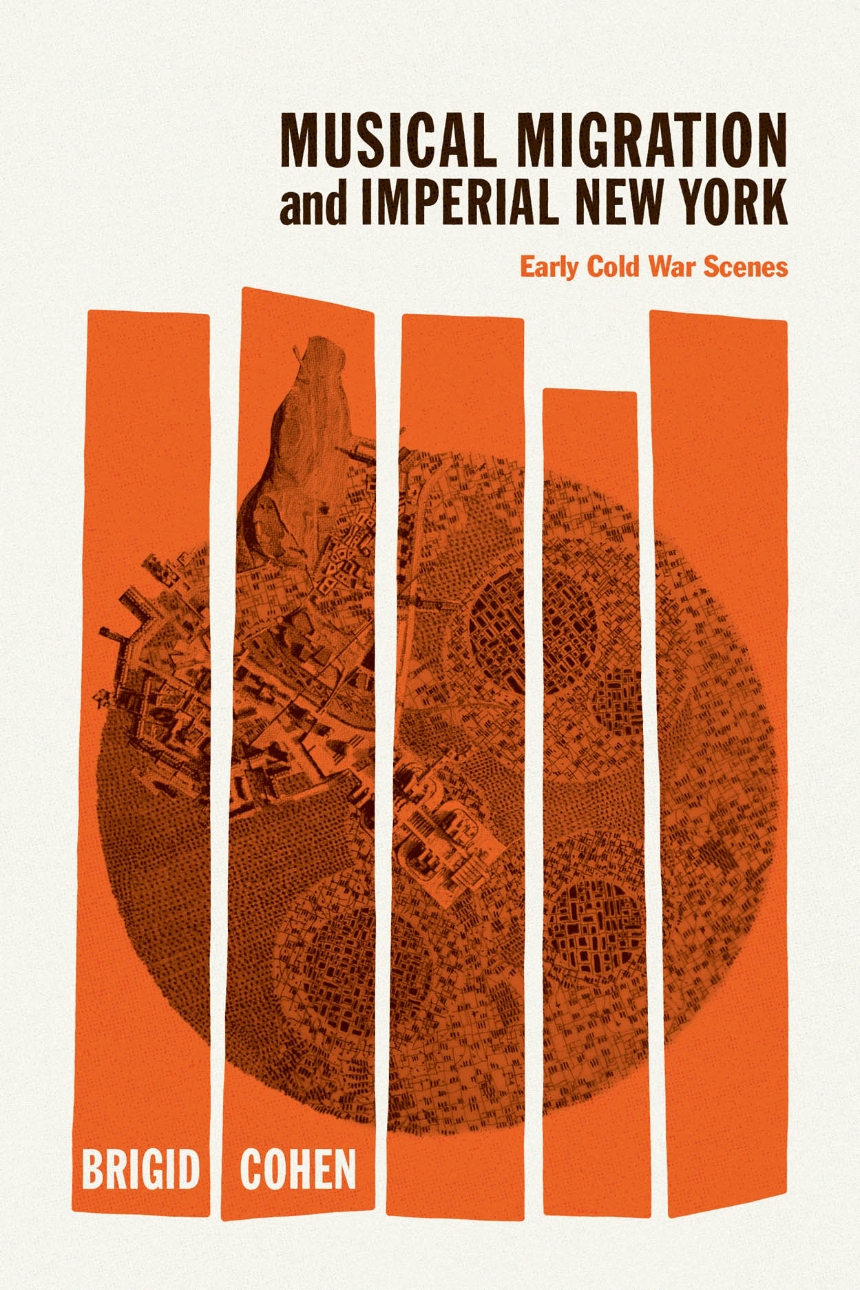Musical Migration and Imperial New York
Early Cold War Scenes
Through archival work and storytelling, Musical Migration and Imperial New York revises many inherited narratives about experimental music and art in postwar New York.
From the urban street level of music clubs and arts institutions to the world-making routes of global migration and exchange, this book redraws the map of experimental art to reveal the imperial dynamics and citizenship struggles that continue to shape music in the United States.
Beginning with the material conditions of power that structured the cityscape of New York in the early Cold War years, Brigid Cohen looks at a wide range of artistic practices (concert music, electronic music, jazz, performance art) and actors (Edgard Varèse, Charles Mingus, Yoko Ono, and Fluxus founder George Maciunas) as they experimented with new modes of creativity. Cohen links them with other migrant creators vital to the city’s postwar culture boom, creators whose stories have seldom been told (Halim El-Dabh, Michiko Toyama, Vladimir Ussachevsky). She also gives sustained and serious treatment to the work of Yoko Ono, something long overdue in music scholarship. Musical Migration and Imperial New York is indispensable reading, offering a new understanding of global avant-gardes and American experimental music as well as the contrasting feelings of belonging and exclusion on which they were built.
From the urban street level of music clubs and arts institutions to the world-making routes of global migration and exchange, this book redraws the map of experimental art to reveal the imperial dynamics and citizenship struggles that continue to shape music in the United States.
Beginning with the material conditions of power that structured the cityscape of New York in the early Cold War years, Brigid Cohen looks at a wide range of artistic practices (concert music, electronic music, jazz, performance art) and actors (Edgard Varèse, Charles Mingus, Yoko Ono, and Fluxus founder George Maciunas) as they experimented with new modes of creativity. Cohen links them with other migrant creators vital to the city’s postwar culture boom, creators whose stories have seldom been told (Halim El-Dabh, Michiko Toyama, Vladimir Ussachevsky). She also gives sustained and serious treatment to the work of Yoko Ono, something long overdue in music scholarship. Musical Migration and Imperial New York is indispensable reading, offering a new understanding of global avant-gardes and American experimental music as well as the contrasting feelings of belonging and exclusion on which they were built.
376 pages | 19 halftones, 1 tables | 6 x 9 | © 2022
New Material Histories of Music
Art: American Art
Culture Studies:
Music: General Music
Reviews
Table of Contents
List of Figures
Introduction: A Recent History of Music, Citizenship, and American Empire
1. Third Space, Scene of Subjection: Mingus and Varèse at Greenwich House
2. Cold War Acropolis I: Ussachevsky, the Rockefeller Foundation, and the CPEMC
3. Cold War Acropolis II: Toyama and El-Dabh at the CPEMC
4. A Counter-Discourse of Orientalism: Ono in Opera
5. The Haunting of Empires: Maciunas, Fluxus, and the Bloodlands
6. Concluding Thoughts
Acknowledgments
Notes
Archival Sources
Bibliography
Index
Introduction: A Recent History of Music, Citizenship, and American Empire
1. Third Space, Scene of Subjection: Mingus and Varèse at Greenwich House
2. Cold War Acropolis I: Ussachevsky, the Rockefeller Foundation, and the CPEMC
3. Cold War Acropolis II: Toyama and El-Dabh at the CPEMC
4. A Counter-Discourse of Orientalism: Ono in Opera
5. The Haunting of Empires: Maciunas, Fluxus, and the Bloodlands
6. Concluding Thoughts
Acknowledgments
Notes
Archival Sources
Bibliography
Index
